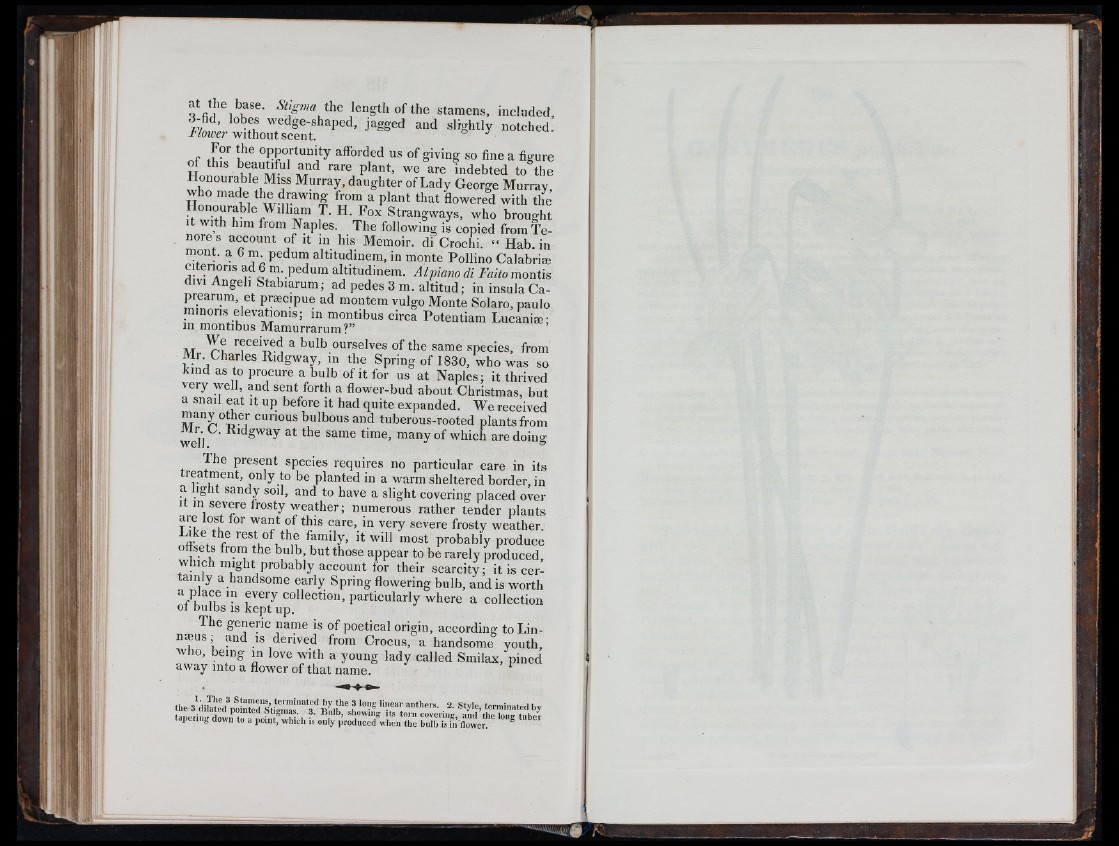
l i .
j I
'! ii’
;f
li
1 .
' -.'i
i
r:. kfi
at the base. Stigma the length of the stamens, included,
3-hd, lobes wedge-shaped, jagged and slightly notched.
ZVozm’ without scent.
For the opportunhy afforded us of giving so fine a figure
of this beautiful and rare plant, we are indebted to the
Honourable Miss Murray, daughter of Lady George Murray,
S n m ^ flowered with the
i ? w i h l 7- Strangways, who brought
It with him from Naples. The following is copied from Te-
iiore s account of it in his Memoir, di Crochi. “ Hab. in
mont. a 6 m pedum altitudinem, in monte Pollino Calabrim
cflerioris ad 6 m pedum altitudinem. Alpiam di Faito mentis
divi Angeh Stabiarum; ad pedes 3 m. altitud; in insula Ca-
prearum, et prsecipue ad montem vulgo Monte Solaro, paulo
ininoris elevatioms; m montibus circa Potentiam Lucanim;
in montibus Mamurrarum?”
We received a bulb ourselves of the same species, from
Mr Hilaries Ridgway, in the Spring of 1830, who was so
kind as to procure a bulb of it for us at Naples; it thrived
very well, and sent forth a flower-bud about Christmas, but
a snail eat it up before it had quite expanded. We received
many oriier curious bulbous and tuberous-rooted plants from
wefl which are doing
The present species requires no particular care in its
treatment, only to be planted in a warm sheltered border, in
a light sandy soil, and to have a slight covering placed over
It in severe frosty weather; numerous rather tender plants
are lost for want of this care, in very severe frosty weather
Like the rest of the family, it will most probably produce
ffsets from the bulb, but those appear to be rarely produced
which might probably account for their scarcity; it is certainly
a handsome early Spring flowering bulb, and is worth
a place in every collection, particularly where a collection
of bulbs IS kept up.
The generic name is of poetical origin, according to Lin-
meus; and is derived from Crocus, a handsome youth,
who, being in love with a young lady called Smilax, pined
away into a flower of that name.